About
We are currently recruiting mine rescue teams, trainers, organizations, and companies that are interested in helping to test and refine the VR Mine Rescue Training (VR-MRT) platform for Beta and Final release to the public.
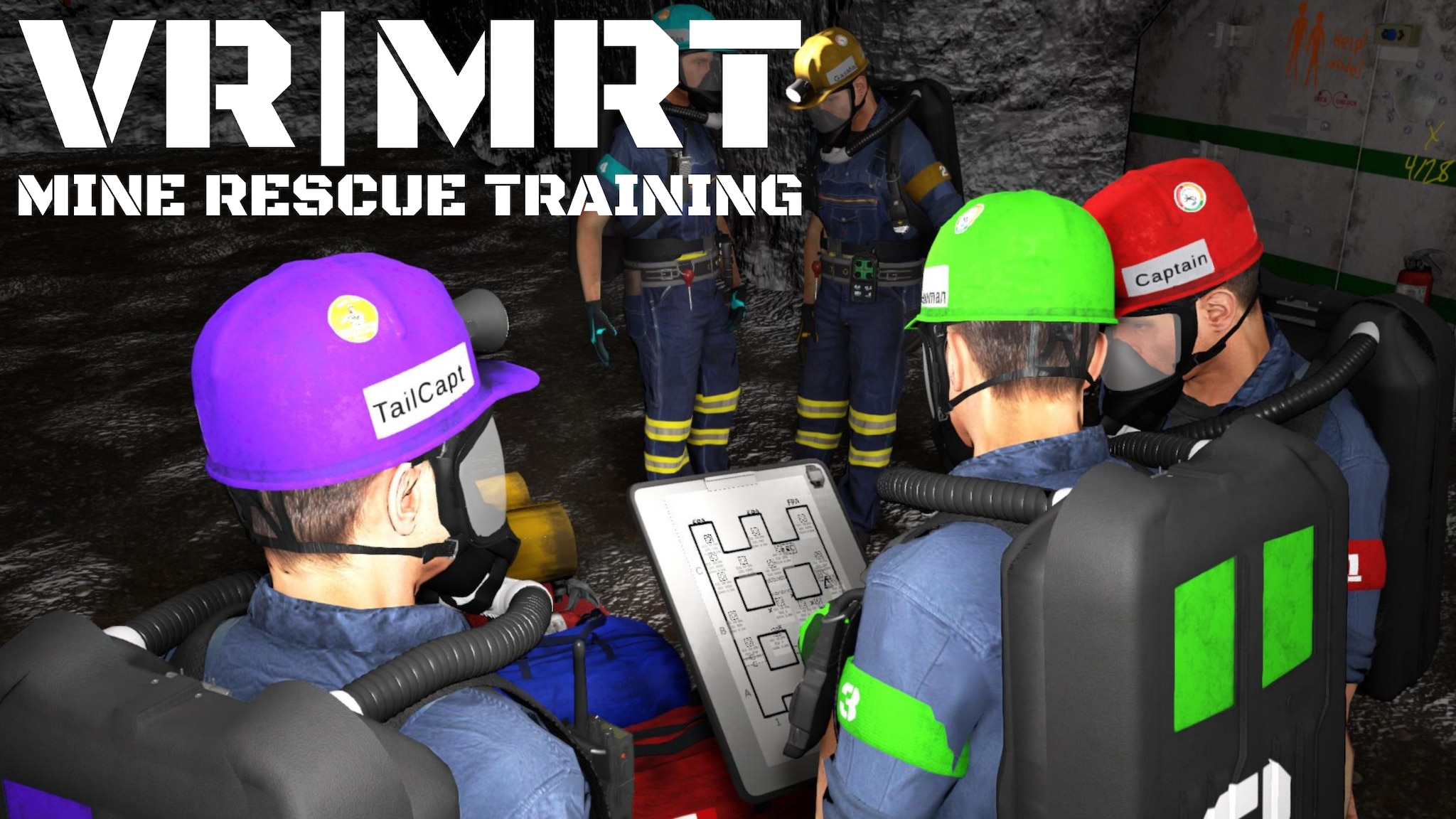
How to participate
Use the link below to send an email and indicate your interest in participating in VR-MRT testing.
What is VR-MRT?
VR-MRT is a training platform designed to supplement current mine rescue training. VR-MRT is intended to improve mine rescue team members' procedural, collaborative, and problem-solving skills for an underground emergency response.
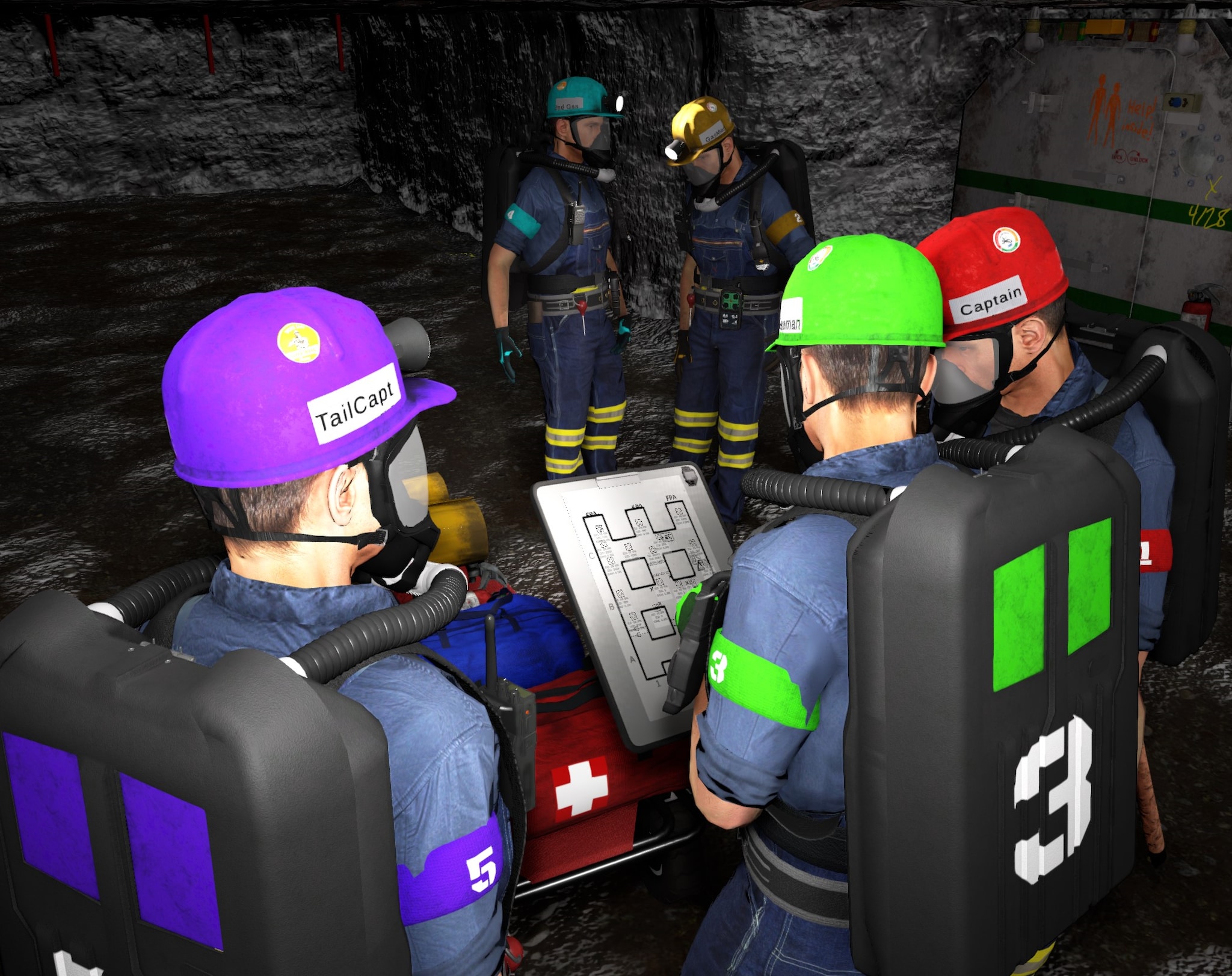
VR-MRT consists of five modules: Scenario Editor, Simulation Module, Director Module, Spectator Module, and Debrief Module.
- Scenario Editor: Allows users to create, modify and share mine rescue scenarios. Using a desktop computer setup, users can place the objects in the scene, set up the ventilation, and change properties.
- Simulation Module: Allows users to work through the NIOSH provided or user created scenarios. Users will join using head mounted displays (HMDs) either remotely or co-located in the same space (Figure 2 & 3).
- Director Module: Allows the trainer to set up, record, monitor, and control the simulation. Using a desktop computer setup, the trainer can change users' settings (e.g., roles, handedness), load scenarios, move the team around the mine (i.e., teleport), and provide them with additional items.
- Spectator Module: Allows additional people to view what is going on in a simulation. Using a desktop computer setup, this module includes an overhead view as well as a chase camera view following the captain.
- Debrief Module: Allows users to play back the log file that was collected in the director module for an after-action review of the simulation.
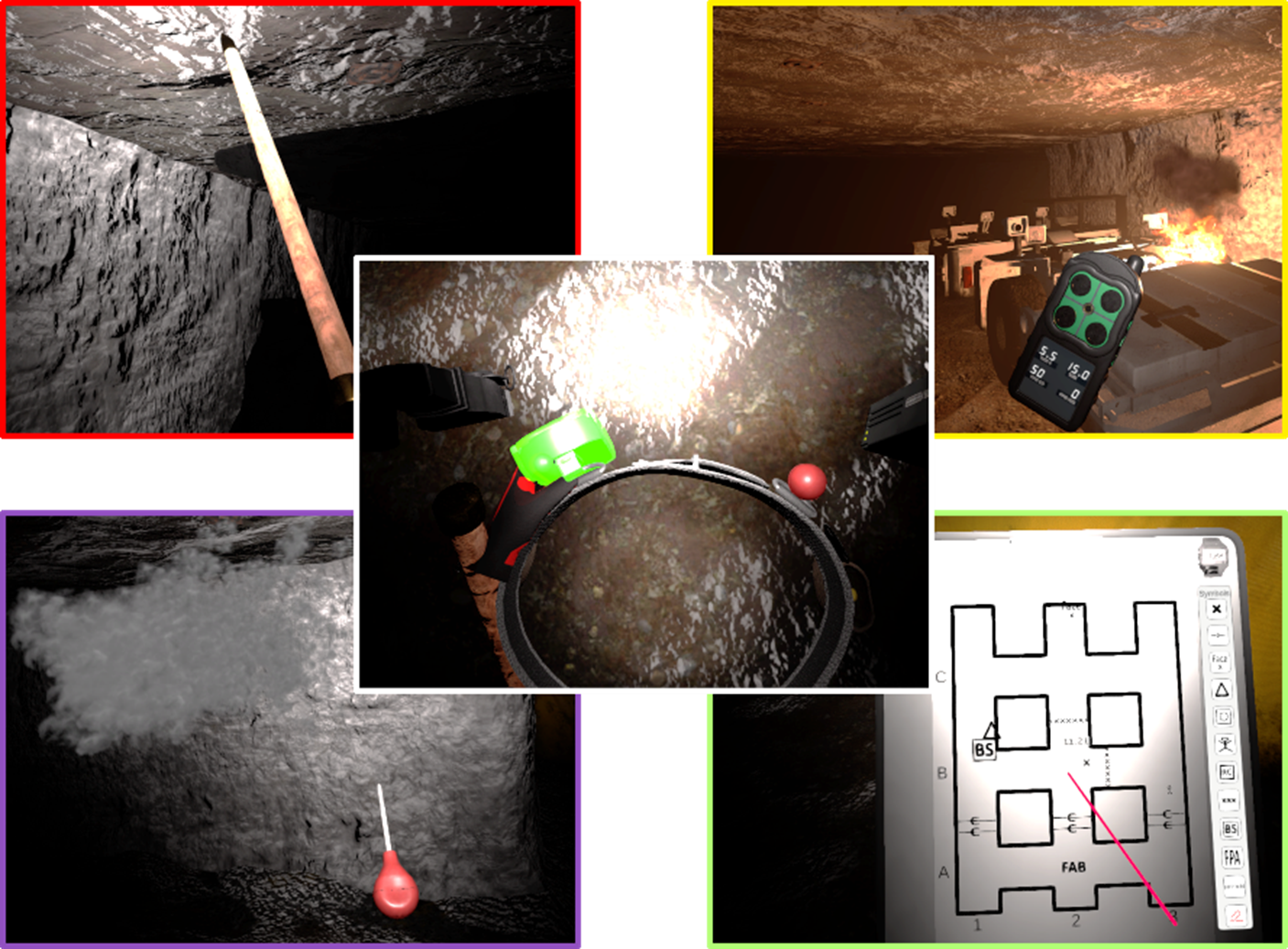
How does VR-MRT work?
Users can create and modify their own training scenarios in VR-MRT's Scenario Editor module. Users are able to generate a mine or import their own. VR-MRT generates mines according to user selected parameters. Parameters include mine type (e.g., coal, stone), condition (e.g., rock dust level), and size (e.g., pillar size, entry width, number of entries and cross cuts). VR-MRT can import custom environments such as LiDAR scans (Figure 4) or photogrammetry. In either case, users can also place objects and set up static and dynamic ventilation. These scenarios can easily be shared with other users.
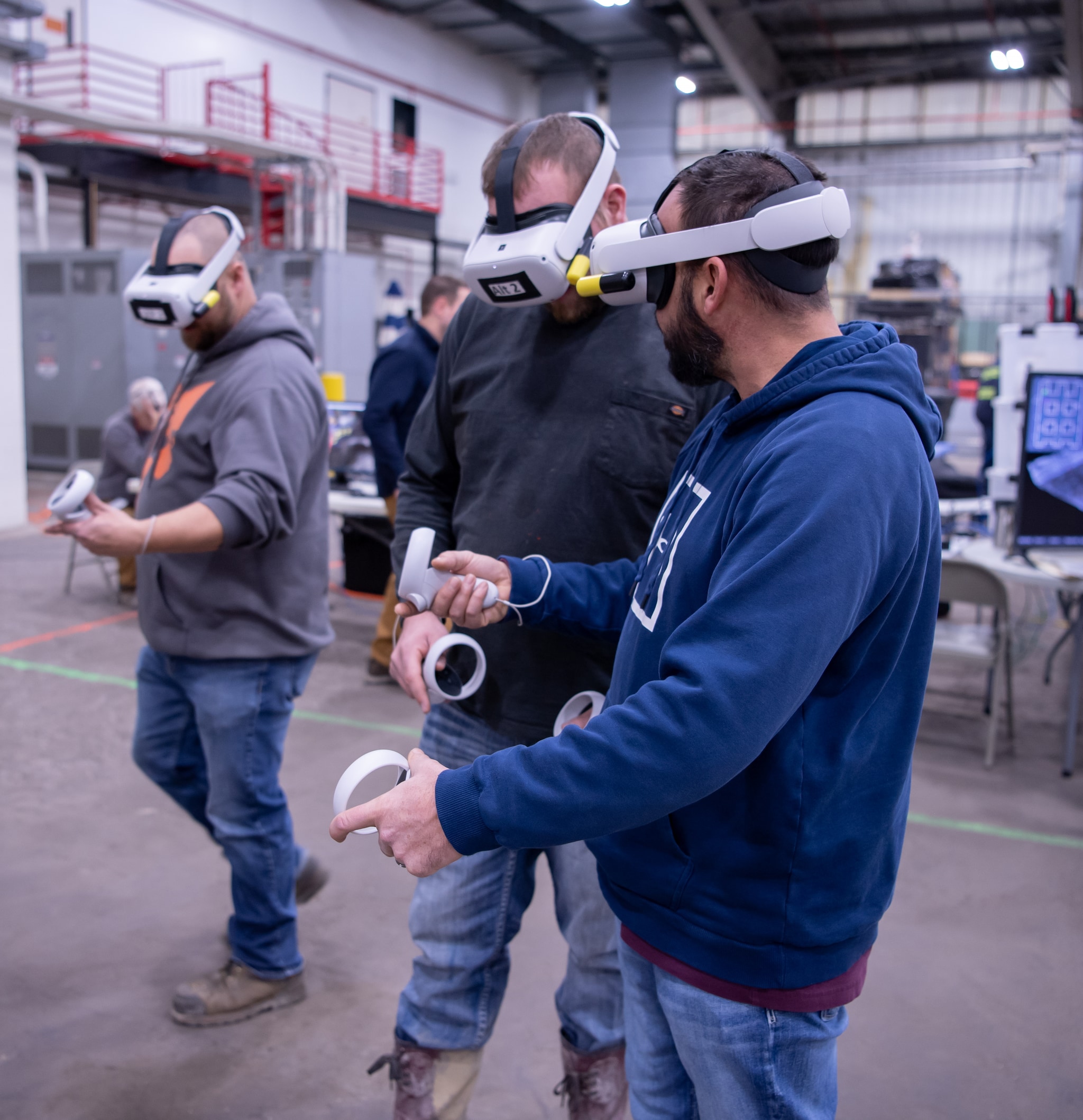
In the Simulation module of VR-MRT, mine rescue team members can work together to complete a mine emergency scenario (Figure 1). The mine rescue scenarios prompt team members to actively explore a mine where an emergency has occurred. Typical emergencies include rock falls, trapped mine workers, or fires.
During the simulation, mine Rescue team members assume different roles that have different tools, as they would in a real emergency. These tools are attached to their belt and can be used in the simulation (Figure 3). For example:
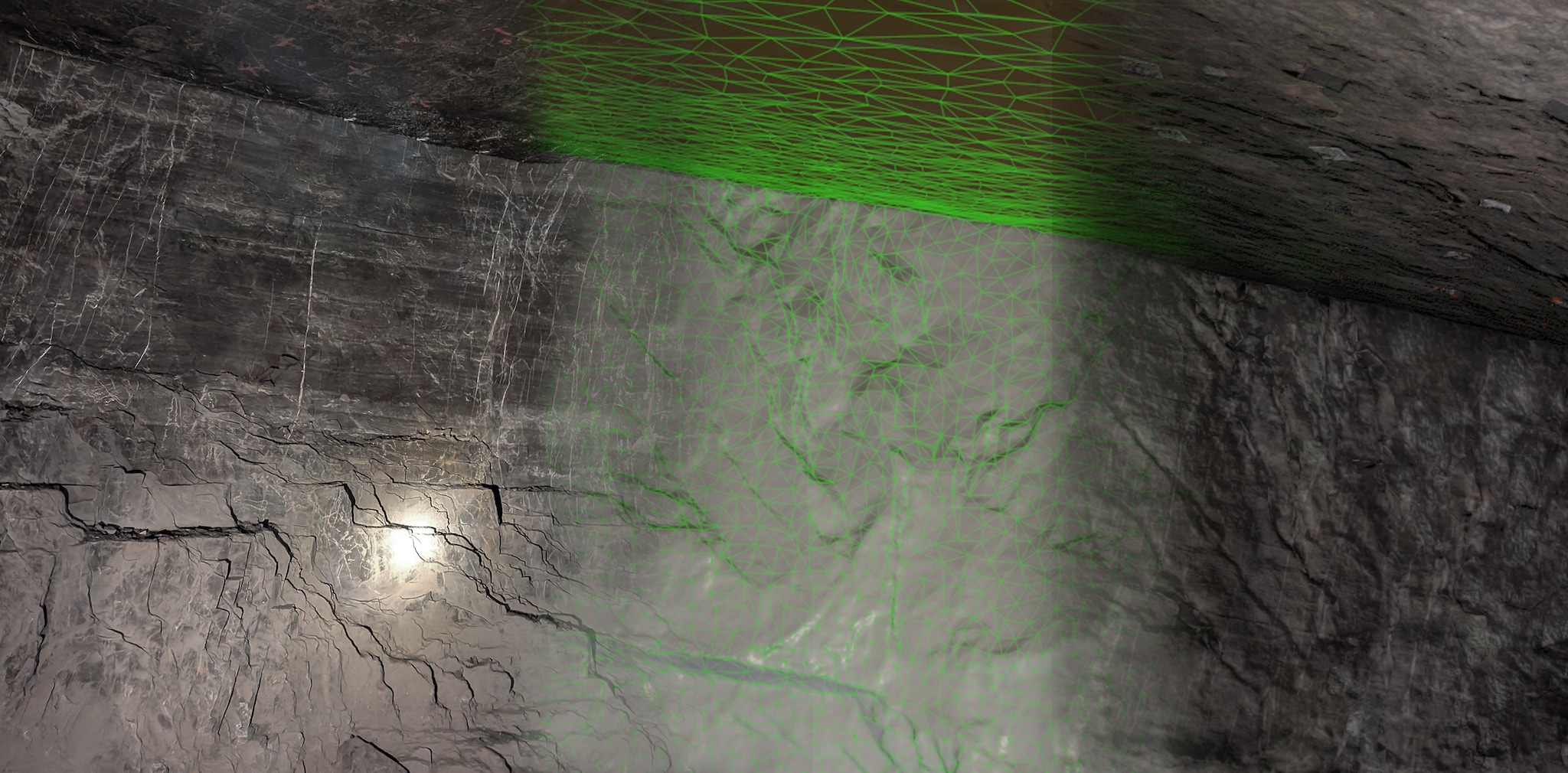
- Captain (red) has a sounding stick to check for bad roof
- Gas man (yellow) has a multi-gas detector to monitor gas levels
- Map man (green) has a map board to record objects and mine conditions
- Tail captain (purple) has a smoke tube to determine airflow
VR-MRT saves all the users' actions and the environmental conditions from each simulation session can be reviewed in the Debrief Module. VR-MRT's Debrief Module includes a 2D and 3D playback where users can visualize team member positions and actions such as taking air readings or discharging a fire extinguisher. It also includes dynamic environmental data that change with user actions like putting up or taking down a curtain.
Additional Information
Current evaluation efforts of VR-MRT are being done under the project Evaluation of VR Mine Rescue Training Platform. This work is a follow on from the NIOSH pilot project Development of VR Mine Rescue Platform and NIOSH project Characterization of Haul Truck Health and Safety Issues.
Bellanca JL, Orr TJ, Hoebbel C, Helfrich W, Macdonald B, Navoyski J, Demich B, Mechling JJ, Schmidt PE, Chasko LL, Cohen J. [2023]. Usability of collaborative "VR Mine Rescue Training" platform. In: APCOM 2023, Intelligent Mining: Innovation, Vision, and Value. Rapid City, SD.
Bellanca JL, Orr TJ, Helfrich WJ, Macdonald B, Navoyski J, Demich B. [2019]. Developing a Virtual Reality Environment for Mining Research. Min Metal Expl 36(4): 597–606.
